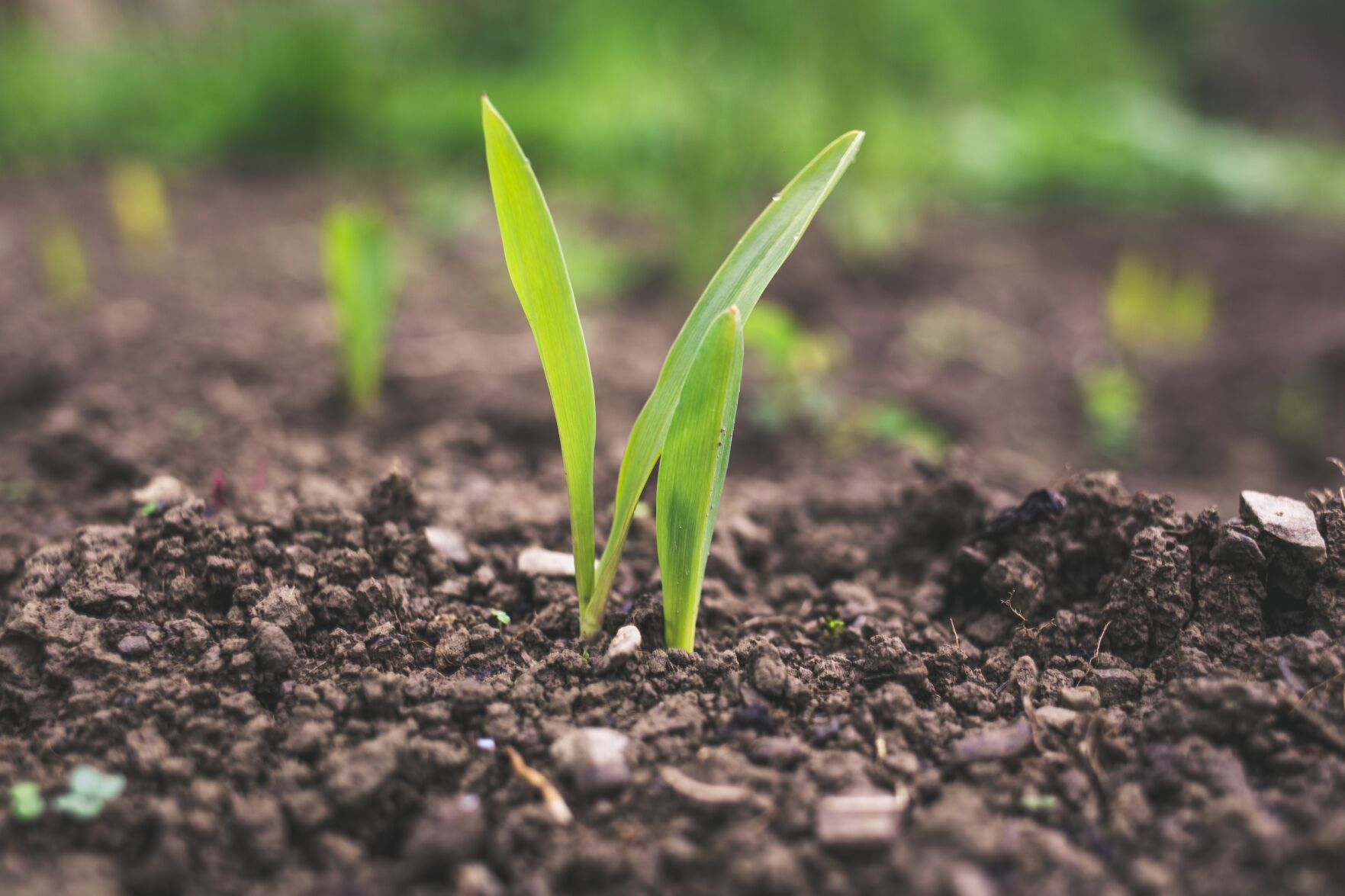Soil health is hot. Never has there been so much interest in the general culture about soil health and how it affects food. But better soil health practices are not being adopted fast enough, and the window of opportunity for preserving soil health is closing, according to Wayne Honeycutt, president and CEO of the Soil Health Institute and a 25-year veteran of the United States Department of Agriculture.
Honeycutt spoke at the beginning and end of The State of Soil, a webinar hosted by SHI featuring panels of top academics, scientists and practitioners focusing on soil health.
Honeycutt served for five years as the deputy chief for science and technology with USDA’s Natural Resources Conservation Service in Washington, D.C., where he led programs in technology acquisition, development and transfer to ensure NRCS conservation practices reflect the latest scientific advances for conserving soil, water, air, plant, animal and energy resources. Before that, he served as a research soil scientist for 14 years and a research leader for 10 years with the USDA-ARS New England Plant, Soil, and Water Laboratory, where he led interdisciplinary research on carbon, nitrogen and phosphorus cycling and sustainable cropping systems development.
50,000-foot view
The webinar, a 50,000-foot overview of soil health across the country, divided the U.S. into four broad soil regions—northeast, south, north central and west. Asked by co-hosts to define soil health, Honeycutt responded with the one he helped develop for USDA-NRCS: “Soil health is defined as the continued capacity of soil to function as a vital living ecosystem that sustains plants, animals, and humans.” That includes three essential functions: storing water, fighting soil pathogens and providing plant nutrients. This science-based definition guides research at USDA’s 124 research sites and guides the development of 30 specific measurements of soil health.
Much of the panels’ discussions focused on measurements, and Honeycutt said the best starting point is the individual unit, whether it’s a farm field or garden. In 100 farms in nine midwestern states, 85% of corn growers and 88% of soybean growers increase yield and incomes by improving soil health practices, he said.
Assessing the transition period to new practices is important, he said, as is answering the question: When do the new practices pay off? “Economics are key” in getting growers to adopt new practices, a point echoed more than once by panelists.
In the first panel on the northeast, Joseph Amsili, Extension associate with Cornell University, spoke of efforts by Cornell scientists to measure soil health more holistically, going beyond simply measuring pH. They came up with measurements of four physical traits, including water retention and compaction, and four biological traits, as well as a suite of chemical tests. The goal, he said, is to develop a set of benchmark measurements that soil labs everywhere can use to interpret soil data the same way.
Urban soils
Joshua Cheng spoke about urban soils and the use of biosoils made up of treated waste. Although urban soils are often contaminated with lead and in poor shape, Sally Brown of the University of Washington pointed out that urban gardens and public green spaces are well-maintained and often have excellent soil. Both urged urban gardeners not to be afraid to garden in the city.
Albert Cox, an environmental research manager for the Metropolitan Water Reclamation District of Greater Chicago, spoke of how treated biosolids from his district have helped reclaim 4,000 acres of strip-mined land, making it productive and fertile once again. One of the greatest barriers to further use is the cost of transportation; beyond a 50- or 60-mile radius from sites of origin in Chicago, it’s not economic, he said.
Southern soils
Bhupinder Farmaha, an assistant professor and extension specialist at Clemson University, noted that soils in the southern region are often less rich, having as little as 1% organic matter and often located on clay hardpans. His focus had been using cover crops to enrich soil, although he noted, “Farmers are ahead of us already.” Sarah Strauss, assistant professor of soil microbiology at the Southwest Florida Education and Research Center, noted that cover crops used to be planted between trees in fruit-growing areas of south Florida, as pictures from the early 20th century show. South Florida raises mostly horticultural crops, the fallow period is between May and August and the rainy seasons often doesn’t correlate with optimum growing seasons.
Tim Crews said row crops are grown toward the north of the southern region, where some perennial grasslands are preserved. “Exciting work is being done” in Iowa with perennial grassland strips, alley-cropping and perennial ground covers. “Preventing erosion is the first task of soil health,” he reminded listeners. Incentives for use of perennials would help; perennial ground covers “are in their infancy.”
Which measurements have meaning?
Farmaha noted that before soil is measured, growers have to figure out what they want to measure, and why. Not all measurements will have meaning for what you want to do. Three measurements which he said have meaning are penetration resistance (of water) at different soil depths, water infiltration rate, and soil particulate carbon. “These three parameters help farmers understand soil health,” he said.
Jordan Wade, professor of soil health, soil fertility and agronomy at the University of Missouri’s Center for Regenerative Agriculture, said he stays away from specific prescriptions, because “farmers are efficient innovators.” Instead, he asks, “What are we asking the soil to do?” Soil health is not “one-size-fits-all.” Lydia English, the strategic initiatives coordinator at Practical Farmers of Iowa, added her focus is “meeting farmer where they are,” and always being aware that farmers are asking when new practices “pencil out.” She spoke of paired comparison trials that show how growers can reduce fertilizer use by 50 pounds per acre without sacrificing yields.
Western variability
Toby O’Geen, professor and extension specialist at the University of California-Davis, noted that western soils and weather are the most variable of any region, encompassing everything from deserts to Mediterranean climates and some of the richest land in the world. The top 10 wettest and driest areas are located in the West, as well as the top 10 hottest and coldest temperatures. Every soil order exists in the West; California alone has more than 1,500 types of soil and grows 200 different crops, with sone areas able to grow four crops in a single season. With such variability, “It’s very challenging to diagnose soil health goals and develop recommendations,” he said. In California, soil health strategies must be based on the locality, even the field.
Deirdre Griffin LaHue, assistant professor of soil health, sustainable soil management and microbial ecology at Northwestern Washington Research and Extension Center, noted that crops like potatoes can’t use no-till, although there are strategies to reduce soil disturbance. With crops like vine grapes, it’s not possible to grow cover crops in alleys. Vine growers are not always trying to maximize yields; they often have other goals. She noted that Washington state just passed a soil health initiative.
Forest soils and systems
Chuck Rhoades, affiliate faculty at the department of soil and crop sciences at Colorado State University, spoke of the importance of forests and forest soils in conserving water in the West. “Most water in the West comes from forested systems,” he said. “Wildfires cause dramatic changes in those systems.” He said decades of suppression of beneficial low-level fires, leading to brush build-up, have combined with climate change to produce “mega-fires” that do devastating damage. “These effects are long-lasting and can take years to remediate,” he said. Temperatures can be so high in high-intensity fires that they can actually destroy the minerals themselves as well as microbes and soil layers. Rain runoff then worsens, leading to steam pollution.
While laying down mulch and planting fresh trees near riparian streams can help protect them, Rhoades said it took 100 years for western forests to get to this state and will take years to undo it.
Honeycutt called the adoption of better soil health practices a “race against time,” and said no-till is used on 37% of farm acreage, and cover crops on only 5 to 6%. “We are way behind where we need to be, but it’s good to see so much interest in soil health.” He said it is crucial to further engage consumers.
David Murray can be reached at [email protected].




